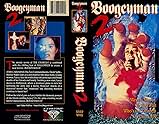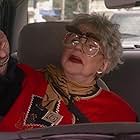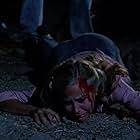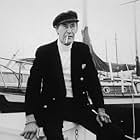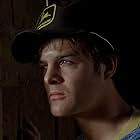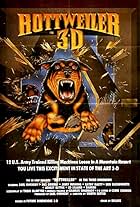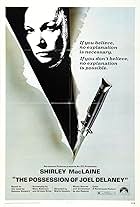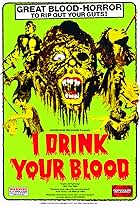IMDb RATING
2.1/10
1.2K
YOUR RATING
Lacey travels to Hollywood, to the home of a film director, where she brings along the last surviving haunted mirror shard from the end of the first movie as proof to her horrifying experien... Read allLacey travels to Hollywood, to the home of a film director, where she brings along the last surviving haunted mirror shard from the end of the first movie as proof to her horrifying experiences.Lacey travels to Hollywood, to the home of a film director, where she brings along the last surviving haunted mirror shard from the end of the first movie as proof to her horrifying experiences.
David D'Arnal
- Sandor
- (as David D'Arnel)
John Carradine
- Dr. Warren
- (archive footage)
Nicholas Love
- Willie
- (archive footage)
Felicite Morgan
- Helen
- (archive footage)
- Directors
- Writers
- All cast & crew
- Production, box office & more at IMDbPro
Storyline
Did you know
- TriviaParamount Pictures wanted to produce a bigger budget sequel to the hit movie The Boogey Man (1980), but director/producer Ulli Lommel didn't want to work for a big studio and decided to make the film (which he later had pulled from circulation) as an independent production.
- GoofsIn the UK cut, titled "Revenge of the Boogeyman", during the opening credits, which is birthday cake icing on white cards, when it gets to John Carradine's credit, a hand can be seen holding the card.
- Alternate versions79 minute regular version versus 83 minute director's cut.
- ConnectionsEdited from The Boogey Man (1980)
Featured review
Made in 1982, "Boogeyman II" is an unsuccessful followup to Ulli Lommel's 1980 horror hit. Carrying sequelitis to a distressing extreme, about half the current picture's running time consists of flashback highlights from the earlier film, amounting to virtually a condensed version. Small wonder that, in common with many other marginal films of late, the pic had no theatrical release but has gone instead directly into the home video market.
Uncredited screenplay is built around the first film's heroine Lacey (Suzanna Love) moving from Maryland to L. A. six months after the supernatural murders recounted in part 1. Much of the pic's early reels consists of flashback material as she tells her story to friends and film director Mickey Lombard (Ulli Lommel).
Beyond recapitulation of already-released footage, "Boogeyman II" is a vehicle for expatriate German filmmaker Uli Lommel to express his misgivings about the Hollywood scene. Recalling (no doubt unintentionally) the theme of an unsung little film-about-films "The Other Woman" by the Czech actor-director Hugo Haas, the picture has Lommel (under protest) shooting some skin shots to spice up his current art film entitled "Nathalie and the Age of Diminishing Expectations". His producer has already retitled the epic "Kiss and Tell".
As Haas did 30 years ago, Lommel (in character) sounds off about the commercial vicissitudes of filmmaking. Thumbing through a copy of Kenneth Anger's "Hollywood Babylon", he spots a photo of Erich von Strohim and comments cynically about the "good old days when Hollywood destroyed real people instead of toys". Regarding spiralling costs and waste, once again the target is a familiar one, as Lommel's agent expresses the low-budget filmer's refrain: "Brian De Palma spent $18,000,000 on that bomb of his "Blow Out", you could make 50 movies for that".
Amidst this griping, the lethal mirror shard brought along from ""Boogeyman" by Lacey goes on the rampage again, possessing the butler Joseph (Sholto von Douglass). With extremely cheap blood and gore effects, various household objects are supernaturally levitaged and used to kill off the greepy guests at a Hollywood party. Besides a garden hose, hedge-clipper, corkscrew and barbecue tongs, the appliances employed in this weak spoof of the "Power tools of death" horror genre extend to an electric toothbrush and even a girl smothered by shaving cream. It's a feeble exercise in black humor, right up through the inevitable graveside ending (ripped off from De Palma's "Carrie").
My review was written in July 1983 after watching the movie on videocassette.
Uncredited screenplay is built around the first film's heroine Lacey (Suzanna Love) moving from Maryland to L. A. six months after the supernatural murders recounted in part 1. Much of the pic's early reels consists of flashback material as she tells her story to friends and film director Mickey Lombard (Ulli Lommel).
Beyond recapitulation of already-released footage, "Boogeyman II" is a vehicle for expatriate German filmmaker Uli Lommel to express his misgivings about the Hollywood scene. Recalling (no doubt unintentionally) the theme of an unsung little film-about-films "The Other Woman" by the Czech actor-director Hugo Haas, the picture has Lommel (under protest) shooting some skin shots to spice up his current art film entitled "Nathalie and the Age of Diminishing Expectations". His producer has already retitled the epic "Kiss and Tell".
As Haas did 30 years ago, Lommel (in character) sounds off about the commercial vicissitudes of filmmaking. Thumbing through a copy of Kenneth Anger's "Hollywood Babylon", he spots a photo of Erich von Strohim and comments cynically about the "good old days when Hollywood destroyed real people instead of toys". Regarding spiralling costs and waste, once again the target is a familiar one, as Lommel's agent expresses the low-budget filmer's refrain: "Brian De Palma spent $18,000,000 on that bomb of his "Blow Out", you could make 50 movies for that".
Amidst this griping, the lethal mirror shard brought along from ""Boogeyman" by Lacey goes on the rampage again, possessing the butler Joseph (Sholto von Douglass). With extremely cheap blood and gore effects, various household objects are supernaturally levitaged and used to kill off the greepy guests at a Hollywood party. Besides a garden hose, hedge-clipper, corkscrew and barbecue tongs, the appliances employed in this weak spoof of the "Power tools of death" horror genre extend to an electric toothbrush and even a girl smothered by shaving cream. It's a feeble exercise in black humor, right up through the inevitable graveside ending (ripped off from De Palma's "Carrie").
My review was written in July 1983 after watching the movie on videocassette.
Details
Contribute to this page
Suggest an edit or add missing content









